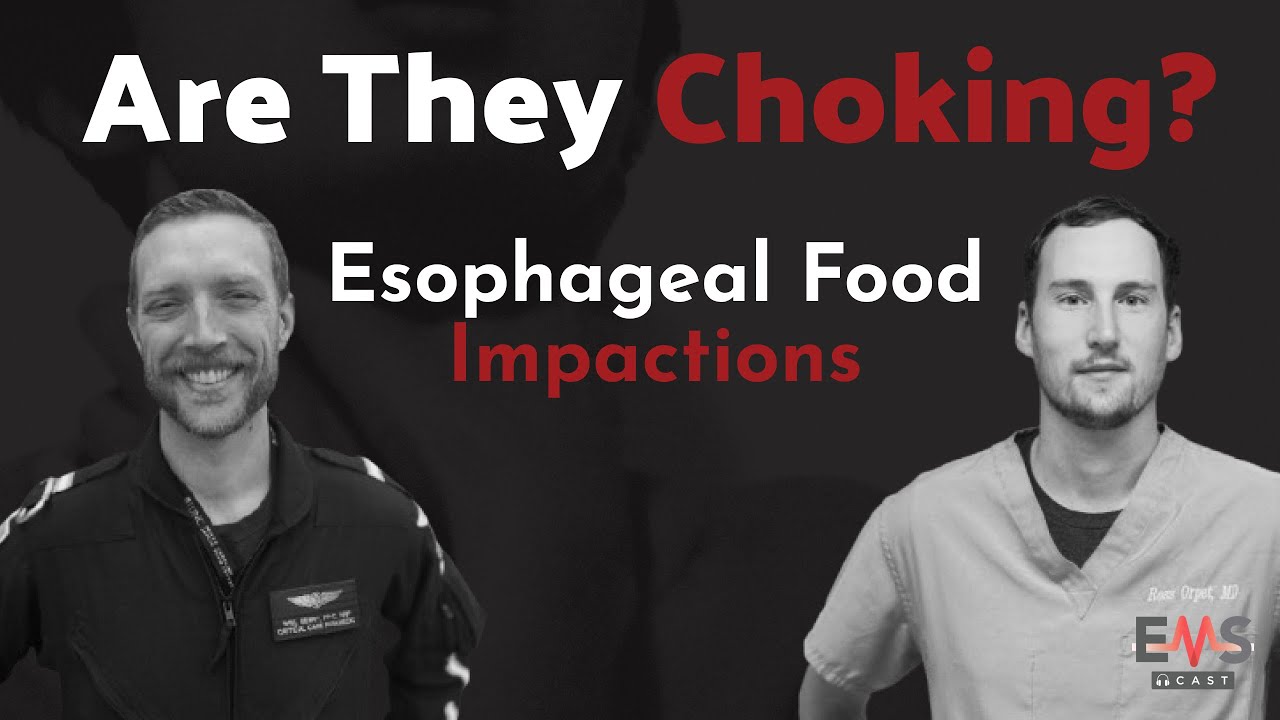Esophageal Food Impactions
An esophageal foreign body often presents as an esophageal food impaction, occurs when food becomes lodged in the esophagus. This condition is often triggered by consuming large, inadequately chewed pieces of food, most commonly meat, which is why it’s colloquially termed “Steakhouse Syndrome.” Unlike airway obstructions that involve the trachea, these impactions occur in the esophagus, often leading to a sensation similar to choking, but with distinct differences and risks.
Causes and Presentation
The primary cause of esophageal food impaction is the consumption of fibrous foods like steak that aren’t chewed adequately. This can happen due to eating too quickly, not chewing thoroughly, and is usually associated with an underlying esophageal condition. Patients experiencing this will often report symptoms like chest discomfort, gagging, dry heaving, and a sensation of fullness or pressure in the chest. Despite these sensations, they can usually breathe and talk, which can help differentiate it from a true airway obstruction.
Why Does This Happen?
This is often caused by some underlying esophageal pathology. Either mechanical or functional.
In terms of mechanical etiologies, this is referred to as a stricture or a narrowing of the esophagus, it is most commonly caused by:
- Schatzki ring- StatPearls Schatzi Ring
- Peptic Stricture- Occurs from long standing uncontrolled gastroesophageal reflux disease
- Eosinophilic Esophagitis- A distinct chronic, local immune-mediated esophageal disease clinically characterized by dysphagia and histologically by eosinophilic-predominant inflammation.
- More on esophageal strictures and their treatments- StatPearls Esophageal Stricture.
In terms of functional etiologies, this occurs with motility disorders, which cause diffused motor abnormalities of the esophagus, or an esophageal spasm. can cause a transient food bolus impaction. In these patients the impaction generally passes after a period of relaxation where the muscles of the esophagus are no longer constricted and allow the bolus to pass.
- More on esophageal motility disorders- StatPearls Esophageal Motility Disorders
Diagnosis and Management
Diagnosing an esophageal food impaction involves clinical evaluation and, ultimately, endoscopy, which is the definitive method to both diagnose and relieve the obstruction. Immediate emergency care focuses on ensuring no airway compromise and preventing aspiration. In the field, ensuring the patient’s airway and breathing are not compromised is crucial, followed by keeping the patient comfortable and limiting nausea and vomiting to help prevent aspiration. In hospital settings, if the obstruction does not pass on its own, gastroenterologists will attempt to remove or push the obstruction into the stomach using an endoscope.
Treatment Options
Various emergency interventions have been attempted, including the administration of medications like glucagon or benzodiazepines, thought to relax esophageal muscles, and ingesting carbonated liquids like cola to help breakdown and dislodge the obstruction. However, scientific studies have found these methods largely ineffective. While these interventions might be attempted in practice as a stop-gap, current evidence does not support their use. Definitive treatment involves an endoscopy to mechanically address the impaction.
Challenges and Considerations
Patients often present to the emergency department when home remedies fail. While this is not always an emergency, medical attention within 12 to 24 hours is advised to prevent complications like esophageal perforation. Keeping the patient comfortable and minimizing aspiration risk is essential during assessment and transport.
Key Takeaways
Understanding esophageal food impaction is important. The primary focus should be on airway management and monitoring potential aspiration risks while awaiting advanced care. Although traditional tricks like glucagon administration are still seen in practice, they are not recommended by current guidelines as current evidence does not support their use and they should not replace proper medical evaluation and intervention.
If you encounter a case of suspected esophageal food impaction, thorough patient assessment and transport to the appropriate medical facility for endoscopic evaluation are critical steps in ensuring patient safety and effective resolution.
Deeper Diver Resources
- American Society for Gastrointestinal Endoscopy- Guidelines for ingested foreign bodies
- Glucagon for Relief of Acute Esophageal Foreign Bodies and Food Impactions: A Systematic Review and Meta-Analysis.
- Efficacy of cola ingestion for oesophageal food bolus impaction: open label, multicentre, randomised controlled trial
- Conservative management of oesophageal soft food bolus impaction
- Esophageal Food Impaction: A Retrospective Chart Review
- Food Bolus Impaction- Question and Answer Review



